Serving 236 students in grades 9-12, Phoenix Coding Academy ranks in the top 10% of all schools in Arizona for overall test scores (math proficiency is top 10%, and reading proficiency is top 10%).
The percentage of students achieving proficiency in math is 65-69% (which is higher than the Arizona state average of 35%). The percentage of students achieving proficiency in reading/language arts is 60-64% (which is higher than the Arizona state average of 40%).
The student:teacher ratio of 16:1 is lower than the Arizona state level of 17:1.
Minority enrollment is 79% of the student body (majority Hispanic), which is higher than the Arizona state average of 66% (majority Hispanic).
Quick Stats (2025)
- Grades: 9-12
- Enrollment: 236 students
- Student:Teacher Ratio: 16:1
- Minority Enrollment: 79%
- Graduation Rate: ≥95% (Top 5% in AZ)
- Overall Testing Rank: Top 10%
- Math Proficiency: 65-69% (Top 10%)
- Reading Proficiency: 60-64% (Top 20%)
- Science Proficiency: 50-54% (Top 10%)
- Source: National Center for Education Statistics (NCES), AZ Dept. of Education
Top Rankings
Phoenix Coding Academy ranks among the top 20% of public schools in Arizona for:
Category
Attribute
Overall Rank
Most improved public schools
Math Proficiency
Reading/Language Arts Proficiency
Science Proficiency
Graduation Rate
School Overview
Phoenix Coding Academy's student population of 236 students has declined by 11% over five school years.
The teacher population of 15 teachers has declined by 6% over five school years.
Grades Offered
Grades 9-12
Total Students
236 students
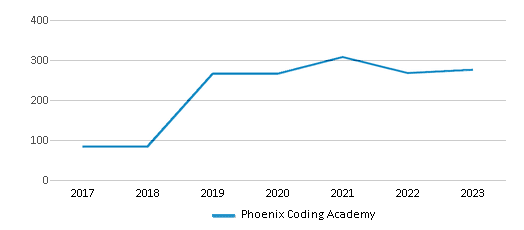
Gender %

Total Classroom Teachers
15 teachers
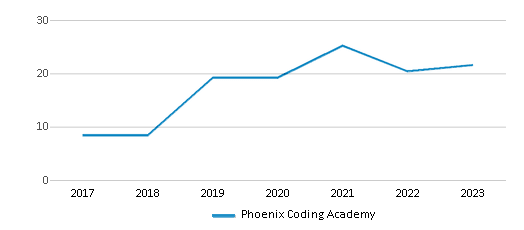
Students by Grade
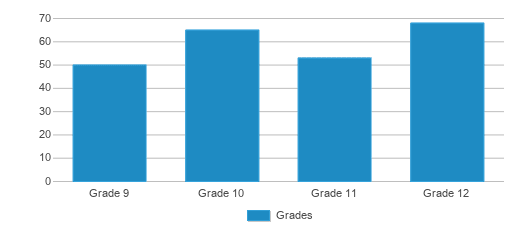
School Calendar
School Rankings
Phoenix Coding Academy ranks within the top 10% of all 1,956 schools in Arizona (based off of combined math and reading proficiency testing data).
The diversity score of Phoenix Coding Academy is 0.58, which is less than the diversity score at state average of 0.66. The school's diversity has stayed relatively flat over five school years.
Overall Testing Rank
#185 out of 1956 schools
(Top 10%)
(Top 10%)
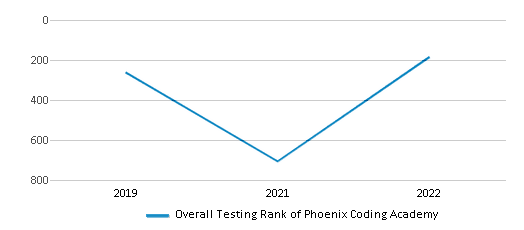
Math Test Scores (% Proficient)
65-69%
35%
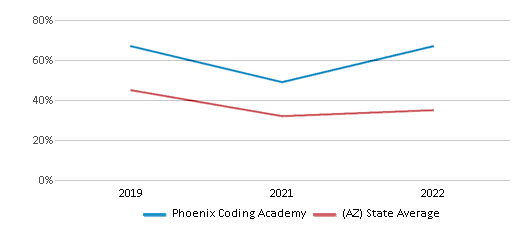
Reading/Language Arts Test Scores (% Proficient)
60-64%
40%
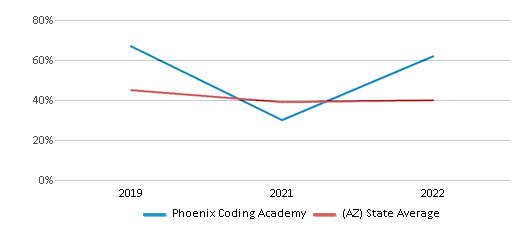
Science Test Scores (% Proficient)
50-54%
24%
Student : Teacher Ratio
16:1
17:1
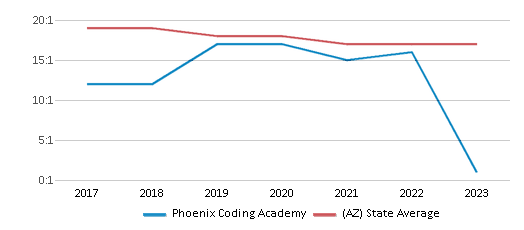
American Indian
1%
5%
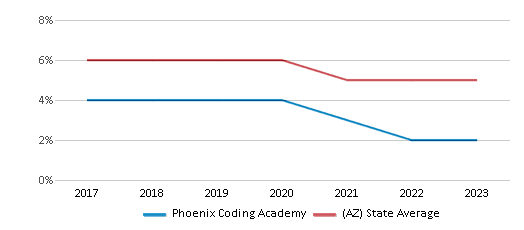
Asian
2%
3%
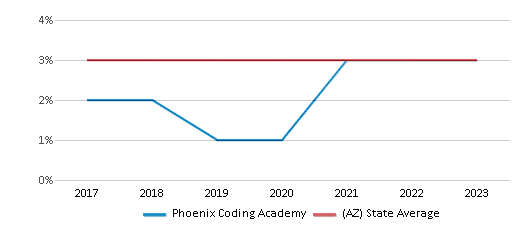
Hispanic
61%
48%
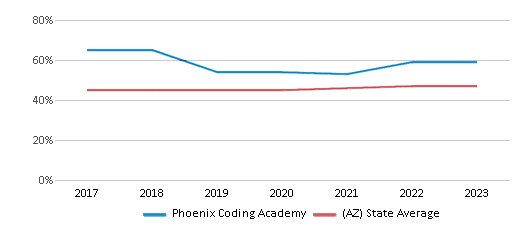
Black
11%
6%
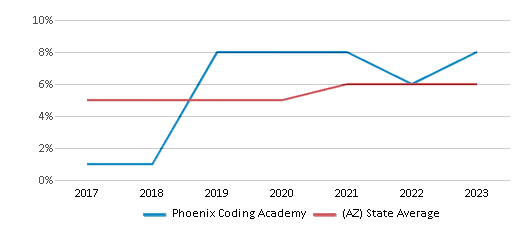
White
21%
34%
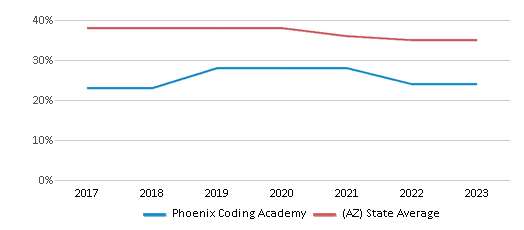
Hawaiian
n/a
n/a
Two or more races
4%
4%
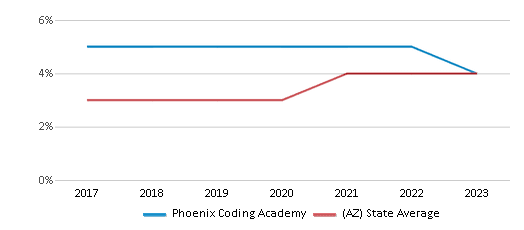
All Ethnic Groups
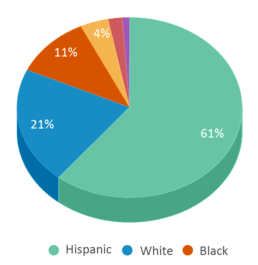
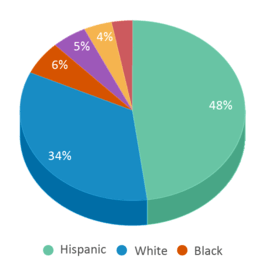
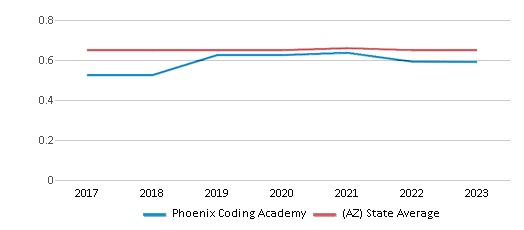
Graduation Rate
≥95%
77%
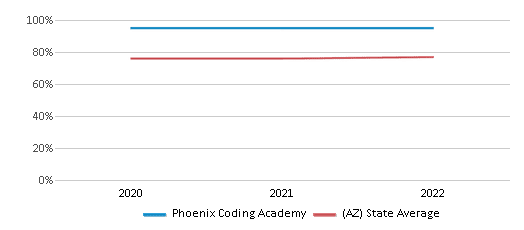
Participates in the National School Lunch Program (NSLP)
Yes
Eligible for Free Lunch
20%
40%

Eligible for Reduced Lunch
5%
10%
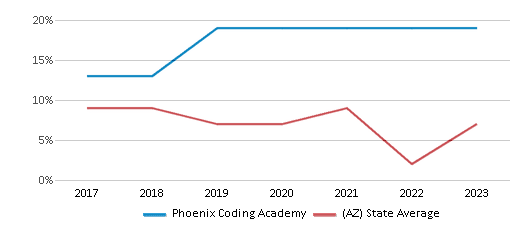
School Statewide Testing
School District Name
Source: National Center for Education Statistics (NCES), AZ Dept. of Education
Profile last updated: 02/09/2025
Frequently Asked Questions
What is Phoenix Coding Academy's ranking?
Phoenix Coding Academy is ranked #185 out of 1,956 schools, which ranks it among the top 10% of public schools in Arizona.
What schools are Phoenix Coding Academy often compared to?
Phoenix Coding Academyis often viewed alongside schools like Phoenix Union Bioscience High School by visitors of our site.
What percent of students have achieved state testing proficiency in math and reading?
65-69% of students have achieved math proficiency (compared to the 35% AZ state average), while 60-64% of students have achieved reading proficiency (compared to the 40% AZ state average).
What is the graduation rate of Phoenix Coding Academy?
The graduation rate of Phoenix Coding Academy is 95%, which is higher than the Arizona state average of 77%.
How many students attend Phoenix Coding Academy?
236 students attend Phoenix Coding Academy.
What is the racial composition of the student body?
61% of Phoenix Coding Academy students are Hispanic, 21% of students are White, 11% of students are Black, 4% of students are Two or more races, 2% of students are Asian, and 1% of students are American Indian.
What is the student:teacher ratio of Phoenix Coding Academy?
Phoenix Coding Academy has a student ration of 16:1, which is lower than the Arizona state average of 17:1.
What grades does Phoenix Coding Academy offer ?
Phoenix Coding Academy offers enrollment in grades 9-12
What school district is Phoenix Coding Academy part of?
Phoenix Coding Academy is part of Phoenix Union High School District (4286).
In what neighborhood is Phoenix Coding Academy located?
Phoenix Coding Academy is located in the Midtown neighborhood of Phoenix, AZ. There are 16 other public schools located in Midtown.
School Reviews
5 2/16/2023
My student had come from a middle school that tolerated bullying and treated the students like behavior problems, even before them having any. He hated school and didn''t want to return. I asked what his perfect high school would look like, and Phoenix Coding Academy ticked all his boxes. He has never witnessed any bullying or fights there. The entire school, teachers and staff included, feel more like a family than a public institution. The teachers recognize and encourage different learning styles and learners. I''m loath to write a good review because I don''t want the student population to get too great that it no longer feels like family. But, this school deserves the kudos.
Review Phoenix Coding Academy. Reviews should be a few sentences in length. Please include any comments on:
- Quality of academic programs, teachers, and facilities
- Availability of music, art, sports and other extracurricular activities
Recent Articles

What Is A Charter School?
Explore the world of charter schools in this comprehensive guide. Learn about their history, how they operate, and the pros and cons of this educational innovation. Discover key facts about charter schools, including admission policies, demographics, and funding, as well as what to look for when considering a charter school for your child.

10 Reasons Why High School Sports Benefit Students
Discover the 10 compelling reasons why high school sports are beneficial for students. This comprehensive article explores how athletics enhance academic performance, foster personal growth, and develop crucial life skills. From improved fitness and time management to leadership development and community representation, learn why participating in high school sports can be a game-changer for students' overall success and well-being.

February 05, 2025
Understanding the U.S. Department of Education: Structure, Impact, and EvolutionWe explore how the Department of Education shapes American education, from its cabinet-level leadership to its impact on millions of students, written for general audiences seeking clarity on this vital institution.









